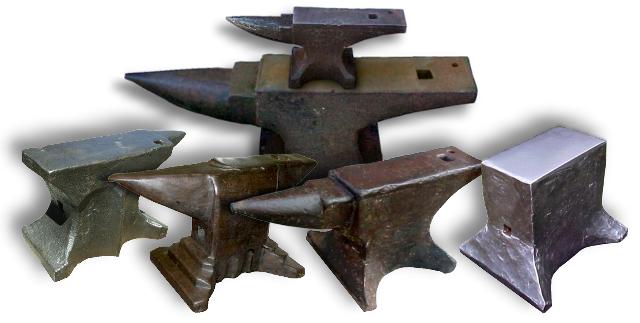Tom O
Ultra Member
Log into Facebook
Log into Facebook to start sharing and connecting with your friends, family, and people you know.
 www.facebook.com
www.facebook.com
 www.facebook.com
www.facebook.com

You could say the same thing about a dirty micrometer, and it would clean it up. And it would still screw in and out and be generally worthless.I would just clean it up with a flap disk and go to work.
You could say the same thing about a dirty micrometer, and it would clean it up. And it would still screw in and out and be generally worthless.
But if you understand how anvils are used or have ever been trained in blacksmithing, you would hear what Tom Kitta says. The 4 different radius on the edges are very important. Using a zip cutter on the horn is also not good.
I would start with building up the edges with a 55 Rockwell tool steel welding rod, and then mill the top surface on a milling machine and then create the radius edges. This would only be done after determining if the hardened surface still exists and the cut-off surface before the horn is soft.
A Peter Wright in good condition, is a sought after tool.A Peter Wright anvil is a sought after tool. This one has had the rats gnawing in it and would need reconditioning but for 600 it is a good buy. I did not see a weight listed in the ad.
It might anneal the top as I can see that a separate harder plate about 1/2 " thick has been attached. The key to success is to ensure the anvil area adjacent to the weld does not rise drastically to a critical temperature because de-laminating will occur. I plan on repairing the connection with 309SS followed by low hydrogen (--18) buildup. The top will be layered with 11018 low hydrogen.When you do that job John I hope I can attend. Will you attempt to heat treat the top after? I assume all the welding will take the hardness out and it would need to be restored? I’m not sure.
I had assumed the 309SS would not creep. That is concerning . I will start the 7018 bead layers on top of the 309SS much sooner.John, I rebuilt a 280 lb anvil befor my shoulders failed, and and I had to give it up and sell everything. I used 309 SS and found it was too soft and would move under the hammer after a lengthy period. There is an underlay rod I think 5051? which is used to bed hardfacing rod on roll crushers. It may be better, it is a stainless looking material.
I am a fan of 309 for a pad when joining dis-similar metals like grader blade on mild steel. Ni-Rod is $6 per rod they charge here. I welded a 24" long crack in an engine block with Ni-Rod, it was a costly repair I'll say. I couldn't justify marking it up to the customer.
For the overly ambitious, here is an article on a do it yourself anvil.
